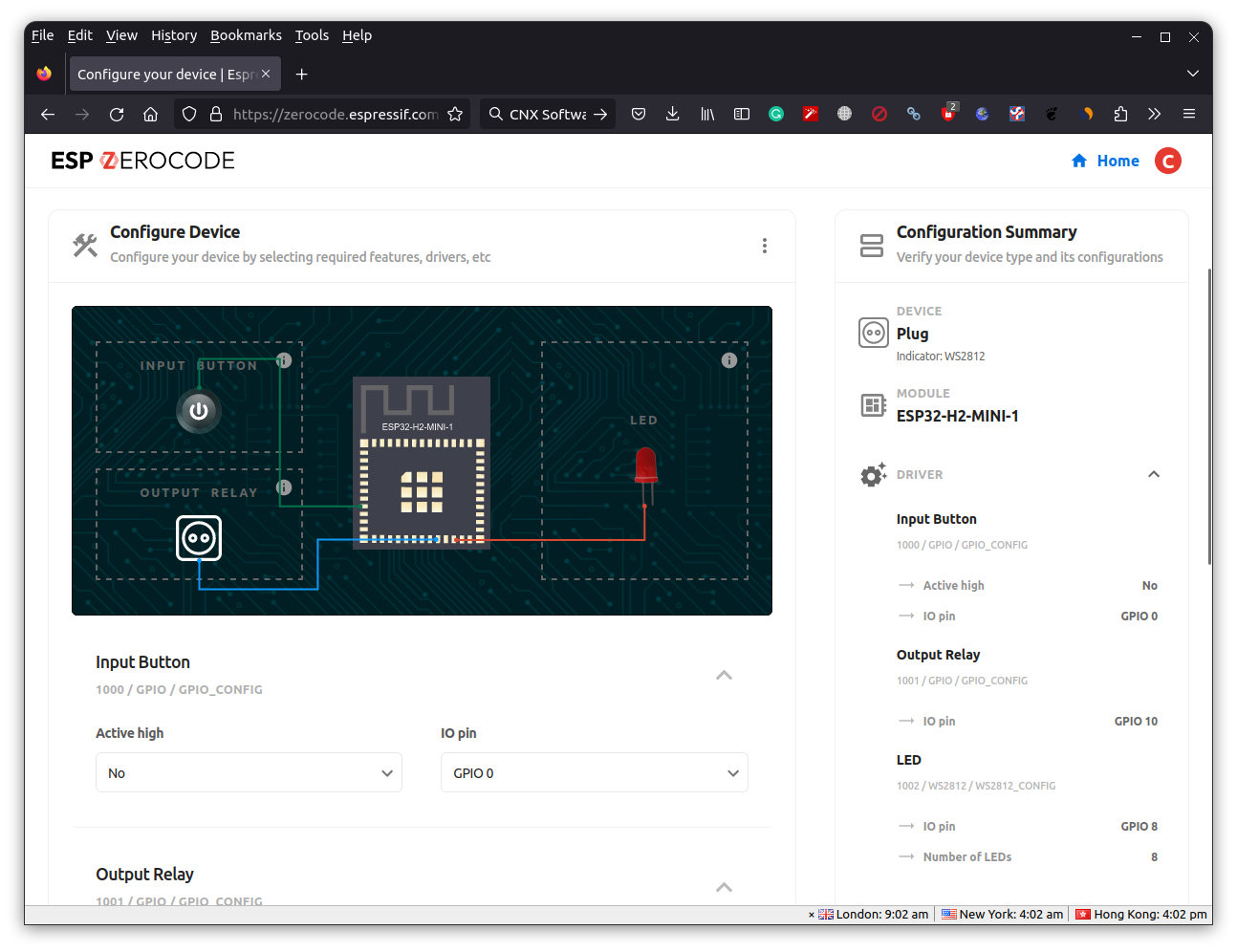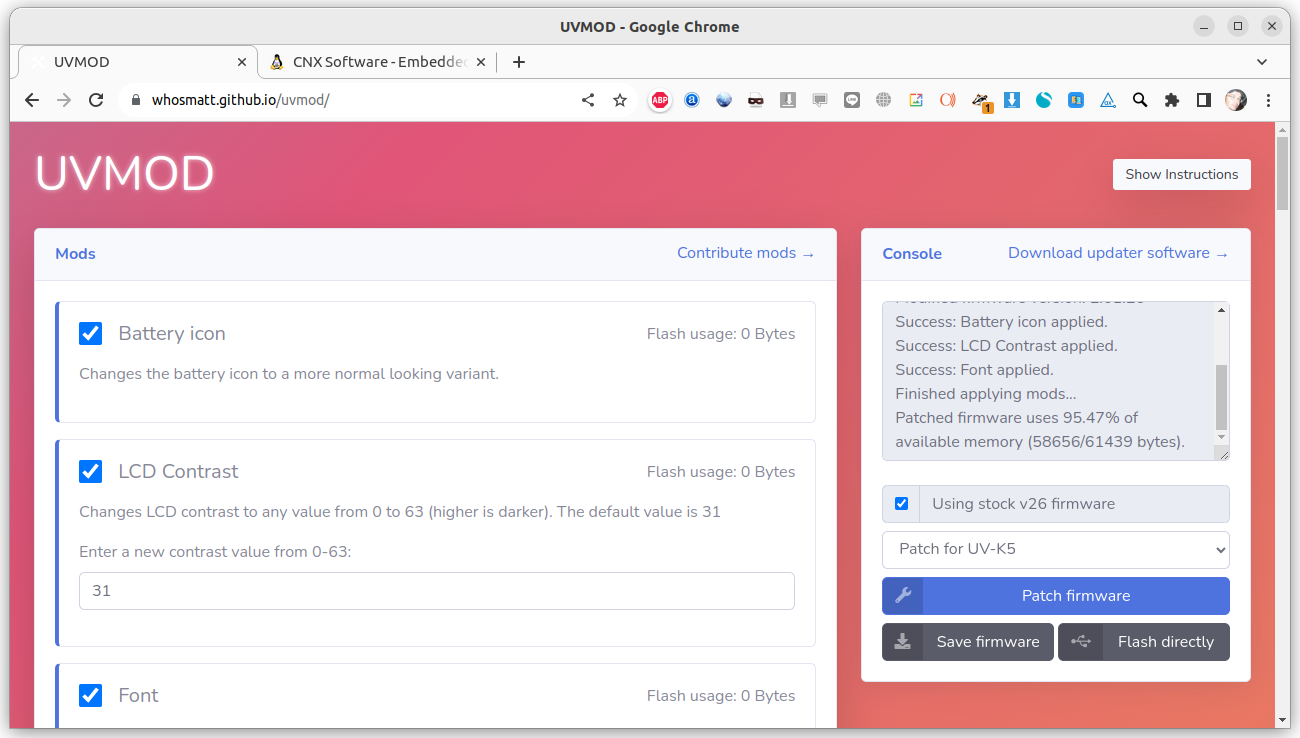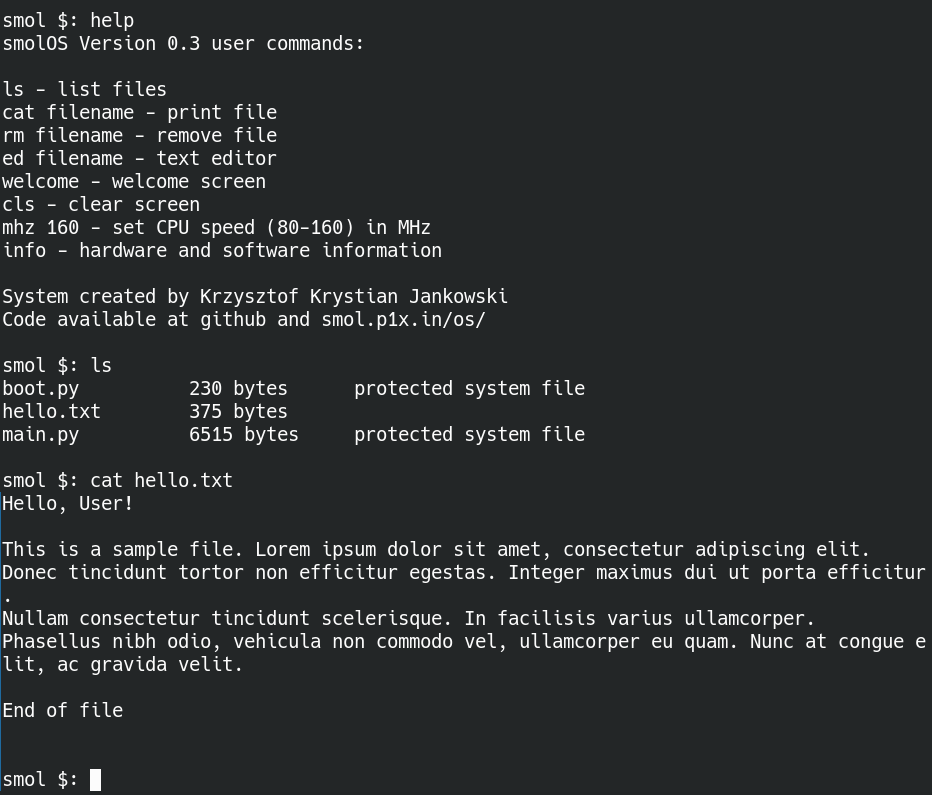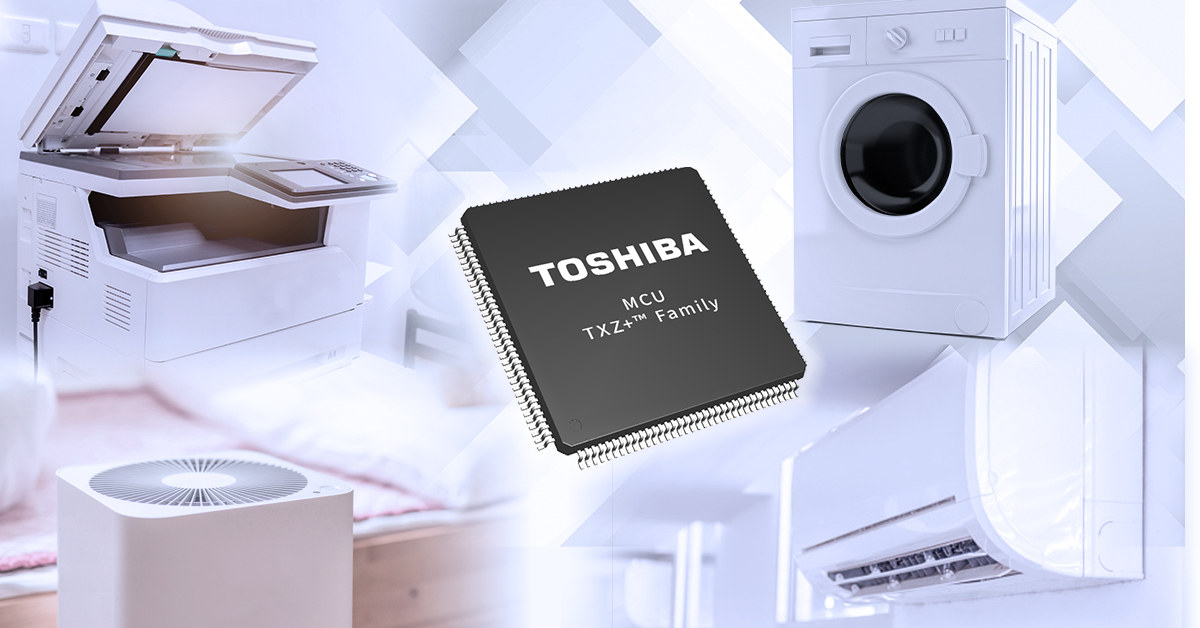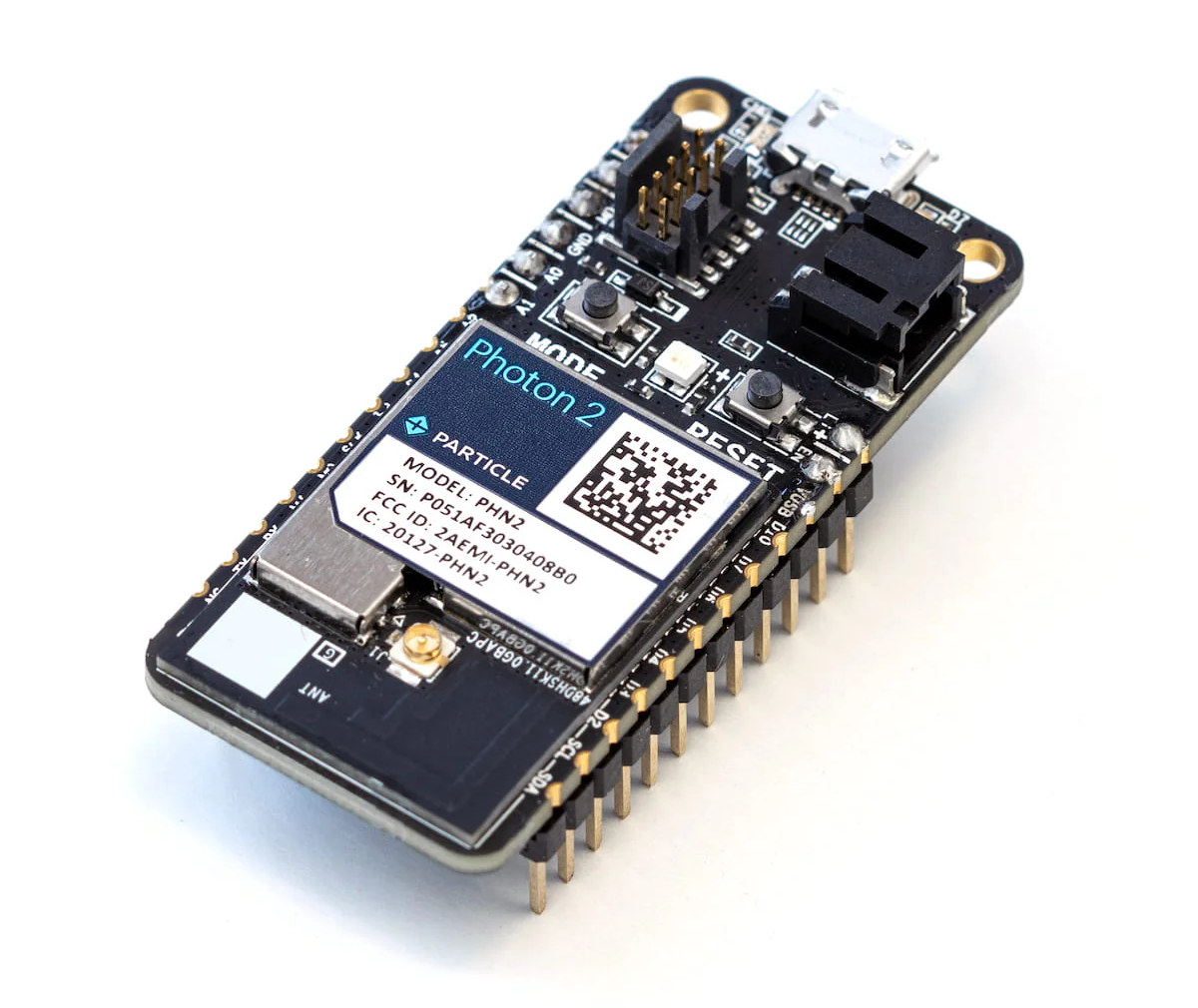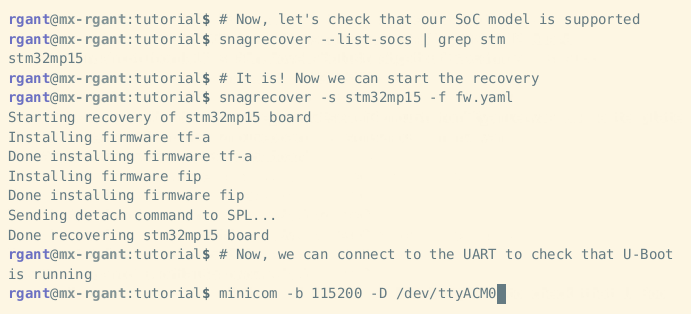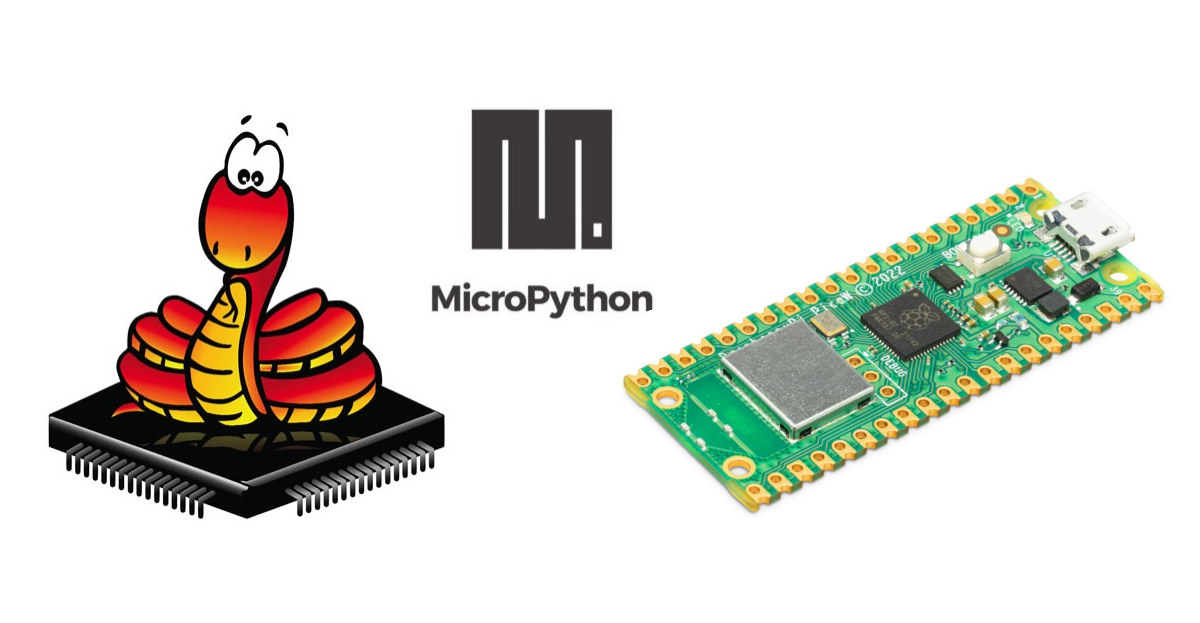Low-code/no-code platforms keep on coming and Espressif Systems ESP ZeroCode adds to the list. It is a web application designed to prepare Matter-certifiable firmware for ESP32 devices as per the user’s requirements. The website is supposed to streamline the product development where the firmware is developed for you (no need for those costly software/firmware engineers!) and future OTA updates are also guaranteed for a period of three years. It’s a bit similar to the Tuya platform, but for ESP32 devkits, modules, and/or rebranded products with Matter-certified firmware. So I went to the website to give it a try in Firefox in Ubuntu. After registration and login, we are given three options: Your products, Create a new product, and Rebrand a Certified Product I went with the second option and named by new product “CNX Software Gizmo”. In the next step, we can select the device type between socket, plug, light, […]
Quansheng multiband radios’ firmware can be flashed and customized from a web browser
We’ve recently written about the Quansheng UV-K5 multiband radio which supports experimental firmware to work in a wider 18 MHz – 1300 MHz frequency range than with the stock firmware so it can be used for amateur radio, air traffic control, Citizens Band (CB) radio, and other fun stuff. But flashing the firmware requires downloading the manufacturer’s Windows-only programming software and customizations are provided through multiple firmware files. But it has now become much easier to flash the firmware for Quansheng devices thanks to the work of whosmatt who developed the UVMOD web interface using WebSerial to flash the firmware and even customize it from Windows or Linux. The interface supports Quansheng UV-K5, UV-K6, UV-K5(8), and UV-5R Plus handheld radios, and you’ll need a web browser that supports the WebSerial API to flash the firmware directly from the web browser directly, which means only the desktop versions of Chrome, Edge, […]
smolOS brings a Linux-like command line interface to ESP8266 microcontroller
smolOS (pronounced small OS) is an open-source, lightweight MicroPython program that implements a POSIX-style (Linux-like) command line interface for the ESP8266 WiFi microcontroller. Krzysztof Jankowski (w84death) designed smolOS to be easy to use, allowing the listing and removing of files and also including the smolEDitor which, as its name implies, is a simple text editor. There are currently eight commands with the familiar ls, cat, and rm, plus ed to launch the text editor, welcome to show the welcome screen above, cls to clear the screen, mhz to set the processor speed to 80 or 160 MHz, and info to display some hardware and software information. The project looks to be a work in progress, and the developer highlights the editor is at the alpha stage of development, so more features may be implemented over time by Krzysztof himself or by the community of developers. I also assume other microcontrollers […]
Quansheng UV-K5 multiband radio gets experimental firmware to work in the 18 MHz – 1300 MHz bands
Quansheng UV-K5, an inexpensive walkie-talkie/multiband radio that works in the 50 MHz to 600 MHz bands, has gotten an experimental firmware from the community that expands the range to 18 MHz to 1300 MHz, the maximum limits of the Beken BK4819 chip it is based on. The device is popular enough in the ham radio community that an unofficial blog has been created for it. The author explains that UV-K5 is better than other typical Chinese radios with “intuitive controls although the naming is a bit cryptic, and a nice crisp display”. He goes on to explain how to flash the firmware and reminds users they do this at their own risk in case they brick the device or break any regulations. The Quansheng UV-K5 supports the following bands with the stock firmware: F1: 50.0000-76.0000MHz (RX only) F2: 108-.0000-135.9750MHz (RX only) F3: 136.0000-173.9750MHz (TX and RX both) F4: 174.0000-349.9750MHz (RX […]
Toshiba “MH3 Group (2)” Arm Cortex-M3 MCU supports firmware updates without interrupting operation
Toshiba “MH3 Group (2)” Arm Cortex-M3 microcontrollers come with a 1MB flash memory partitioned into two 512KB partitions to enable firmware updates without interrupting microcontroller operation using an area swap function to rotate to the new firmware seamlessly. The new M3H Group (2) builds upon the M3H Group(1) by expanding the code flash memory up to 1MB, and the RAM capacity from 66KB to 130KB. Both are part of the “TXZ+ Family Advanced Class” manufactured with a 40nm process, and equipped with a 120 MHz Arm Cortex-M3 core as well as various interface and motor control options such as UART, I2C, Advanced Encoder Input Circuit, and Advanced Programmable Motor Control Circuit. Toshiba MH3 Group 2 key features and specifications: CPU core – Arm Cortex-M3 @ 120 MHz with memory protection unit (MPU) Internal oscillator – 10MHz (+/-1%) Internal memory Code flash memory – 512KB to 1024KB (program/erase cycles: up to […]
Particle launches Photon 2 Realtek RTL8721DM dual-band WiFi and BLE IoT board, Particle P2 module
Particle has launched the Photon 2 dual-band WiFi and BLE IoT board powered by a 200 MHz Realtek RTL8721DM Arm Cortex-M33 microcontroller, as well as the corresponding Particle P2 module for integration into commercial products. The original “Spark Photon” WiFi IoT board was launched in 2014 with an STM32 MCU and a BCM43362 wireless module, but the market and company name have changed since then, and Particle has now launched the Photon 2 board and P2 module with a more modern Cortex-M33 WiFi & BLE microcontroller with support for security features such as Arm TrustZone. Particle Photon 2 specifications: Wireless MCU – Realtek RTL8721DM CPU – Arm Cortex-M33 core @ 200 MHz Memory – 4.5MB embedded SRAM of which 3072 KB (3 MB) is available to user applications Connectivity – Dual-band WiFi 4 up to 150Mbps and Bluetooth 5.0 Security Hardware Engine Arm Trustzone-M Secure Boot SWD Protection Wi-Fi WEP, […]
Snagboot is an open-source cross-vendor recovery tool for embedded targets
Bootlin has just released the Snagboot open-source recovery tool for embedded platforms designed to work with multiple vendors, and currently STMicro STM32MP1, Microchip SAMA5, NXP i.MX6/7/8, Texas Instruments AM335x and AM62x, and Allwinner “sunxi” processors are supported. Silicon vendors usually provide firmware flashing tools, some closed-source binaries, that only work with their hardware. So if you work on STM32MP1 you’d use STM32CubeProgrammer, while SAM-BA is the tool for Microchip processors, NXP i.MX SoC relies on UUU, and if you’ve ever worked on Allwinner processors you’re probably family with sunxi-fel. Bootlin aims to replace all those with the Snagboot recovery tool. The Python tool is comprised of two parts: snagrecover using vendor-specific ROM code mechanisms to initialize external RAM and run the bootloader (typically U-Boot) without modifying any non-volatile memories. snagflash communicates with the bootloader over USB to flash system images to non-volatile memories, using either DFU, USB Mass Storage, or […]
MicroPython 1.20 released with Raspberry Pi Pico W support, mip package manager, smaller footprint
Damien George has recently announced the release of MicroPython 1.20 with support for the Raspberry Pi Pico W board., a new lightweight package manager called mip, a smaller footprint thanks to the use of compressed type structs, and many other changes. mip package manager The new mip package manager uses a custom protocol optimized for embedded systems to query and install packages, and intends to replace upip for installing packages from micropython-lib or any URL. Mip can be run directly on a device, as long as it has network connectivity, or via mpremote from a host computer. Damien explains all pure-Python drivers have been moved from the micropython repository to the micropython-lib repository as part of the change in order to make it easier to install the packages needed for a given project. MicroPython is getting smaller The MicroPython binary size has been reduced by many kilobytes for all ports […]


